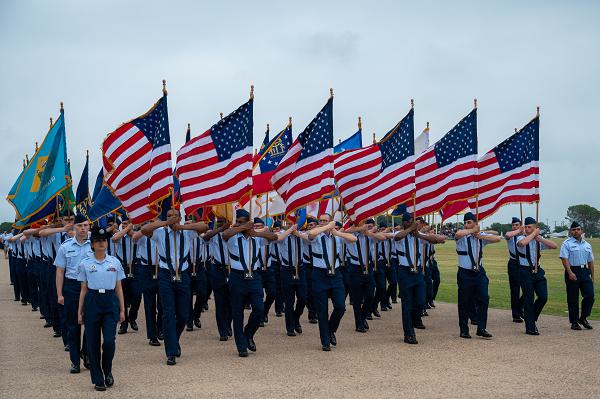
Joint Base San Antonio-Lackland, Texas. ( April 25, 2024): Somehow, word got around that Air Force Basic Training is easier than other branches of the service. Nothing could be further from the truth. In this photo by Ava Leone, more than six hundred Airmen assigned to flights 301 through 315 graduates from Basic after weeks of grueling mental and physical training. Due to its flashy mission, the difficulty of Air Force Basic training is often underestimated.
The seven-and one-half week program begins with in-processing and an initial physical examination. Recruits are expected to pass a physical fitness test including timed push-ups, sit-ups, and a one-and-a-half-mile run. Trainees seeking to enter Special Warfare career fields have additional requirements including swimming.
The first few weeks concentrate on basic war skills, military discipline, physical fitness, and drill and ceremonies. Students absorb the Air Force’s core values and an understanding of a comprehensive range of subjects relating to Air Force life. Students face the “gas chamber” during the Chemical, Biological, Radiological, and Nuclear (CBRN) Defense Course to learn to wear their protective masks properly in an unforgiving environment. Later, in the fifth week, trainees battle each other with pugil sticks during Combatives training and learn a variety of martial arts techniques.
During week six, trainees confront the BEAST (Basic Expeditionary Airman Skills Training), the final test of the skills and knowledge they have gained during Basic. The exercise involves a two-day scenario in which airmen are operating as forward deployed units. The BEAST puts all the skills and tactics learned in Basic, from tactical drill to dealing with explosives, to the ultimate test.
The reality is that Air Force Basic, while often underrated, is just as tough.


